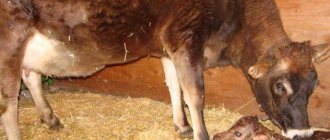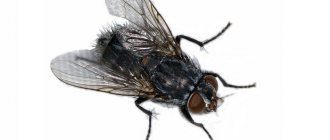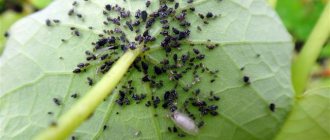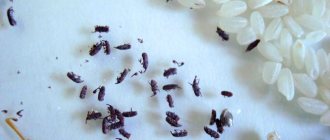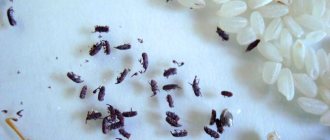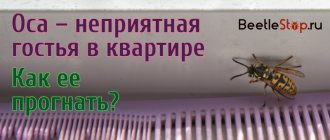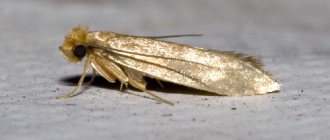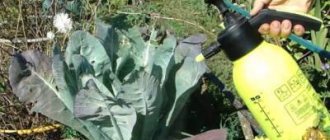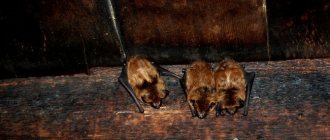Ants are one of the most common beneficial hymenopteran insects. However, their excessive quantity in the garden or vegetable garden can cause great damage to the future harvest. The fact is that garden ants prefer to build their nests in the roots of seedlings, gnawing them. Insects can be found especially often in strawberries and currants, as well as under plum, apple or pear trees. They often harm bell pepper, eggplant or cabbage seedlings by digging long tunnels in the ground. You will learn what to do if ants eat cabbage in this article.
Fighting ants on the site: pros and cons
The benefits of ants on the site:
- Garden cleaners: destroy larvae, caterpillars, spider mites, and other pests.
- They make the ground breathable due to passages under the ground.
- Saturate the soil with soluble potassium, nitrogen, humus, and phosphorus. Microelements are easily absorbed by plants.
Harm:
- They eat seeds and sprouts of young plants, which leads to the death of the crop.
- They breed the most dangerous pest - aphids. For the winter they drag it to the depths.
- They form colonies under the crop, thereby disrupting the root system.
- Underground passages allow cold and insecticides to enter the soil.
- They feast on the contents of buds and flowers.
A serious threat (aphids) forces gardeners and gardeners to fight ants.
Plant protection methods
If the owner notices that ants are eating cabbage, it is urgent to choose a method to combat the pest. Experienced summer residents identify the following methods:
If ants eat cabbage, then it is necessary to use folk recipes or chemical preparations from the first days (in case of a large colony). If you start planting, the individuals can infest all the plants and ruin the harvest. In addition to eating the above-ground parts, insects destroy the root system, moving from one plant to another. Careful and regular inspection of cabbage beds, as well as timely assistance, are the main aspects in achieving a positive result. The work invested will not be in vain and the owner will receive a high-quality and abundant harvest of heads of cabbage from his own garden.
Are ants dangerous for cabbage?
Ants love to feed on sweet nectar. It is not found in cabbage. But its production by aphids on the site is a direct threat to cabbage. Insects eat up the roots of a young plant or disrupt the root system while moving. As a result, the cabbage dies. Although experienced gardeners rule out such an action of ants, and are inclined to believe that in such cases it is necessary to fight the mole cricket.
Prevention measures
To prevent ants from causing damage to cabbage, preventive measures should be taken. It is important to prevent aphids from appearing on cabbage, which attract ants. You can reduce the likelihood of these insects appearing in your garden by keeping it clean, removing weeds in a timely manner and removing dead plants. It is important to do this in the fall, since females most often lay eggs on them during this period. There should be no stumps, boards or various objects suitable for arranging an anthill on the site.
Now you know how to prevent ants from appearing on cabbage and in your garden. We hope that this information will help protect your garden from pests and get a good harvest.
Signs and symptoms of cabbage insect damage
The leaves of seedlings are the first to react to damage. Aphids settle on the lower part of the leaf blade and drain the life-giving power of the plant. Over time, the leaf becomes transparent and light. A sticky mixture forms on the surface, which ants adore. The leaves are deformed and curled. At the first sign they fight pests. The ants will leave on their own, since there will be no food for them.
If the top part of the cabbage looks healthy, but falls down as if cut down, the cause may be an anthill. Its location can be right in the hole, close to it. When getting to their home, ants leave paths. If a young succulent root is caught on the way, insects spoil the root system.
See also
Description of the best cabbage varieties for [god] year for different regions
Read
Plant protection methods
If the owner notices that ants are eating cabbage, it is urgent to choose a method to combat the pest. Experienced summer residents identify the following methods:
If ants eat cabbage, then it is necessary to use folk recipes or chemical preparations from the first days (in case of a large colony). If you start planting, the individuals can infest all the plants and ruin the harvest. In addition to eating the above-ground parts, insects destroy the root system, moving from one plant to another. Careful and regular inspection of cabbage beds, as well as timely assistance, are the main aspects in achieving a positive result. The work invested will not be in vain and the owner will receive a high-quality and abundant harvest of heads of cabbage from his own garden.
Source
How to remove from the site
Ants are removed using various methods:
- physical;
- chemical;
- combined;
- industrial pesticides.
How to save culture is up to you.
Physical
In autumn and winter they dig deep into the soil. First remove all objects where a colony could settle: rags, old boards, tree stumps. During the digging process, you may encounter an anthill. When the queen is removed from the nest, the worker ants will leave the area.
Before planting, treat the soil with a solution: add 10 grams of soda and 60 grams of linseed oil to a bucket of water. In the summer, they constantly loosen the soil and fill the insect passages with soda, ash or mustard.
Chemical
Poisoned baits are placed on the site: boric acid with honey or jam, sugar.
They prepare decoctions with herbs - mint, garlic, mustard, wormwood - that repel ants.
Combined
Prepare a deep pan or any container, cover the bottom with a dark cloth. Pour a viscous sweet liquid on top: syrup, jam, honey. Place the dishes near the anthill. Not only the ants, but also the queen will end up here irrevocably.
Industrial pesticides
If you don’t want to fight ants using safe methods, industrially produced pesticides will come to the rescue. There is a wide choice, but do not forget about safety precautions. Be careful with poisons if you have children or pets in the house.
Homemade recipes for aggressive destruction mixtures
These folk remedies are less humane. They involve the destruction of ants. But sometimes insects multiply so rapidly that owners have no choice but to begin a ruthless battle against pests.
Salt composition
Peculiarities. Regular kitchen salt will help get rid of ants in your dacha. You can sprinkle it on paths that will cut off the path to the plants. To completely destroy an anthill, use the following recipe.
Compound:
- salt - 1 kg;
- water - 3 l.
What to do
- Place salt in boiling water and stir the solution thoroughly.
- Fill the anthill with the resulting product.
The saline solution penetrates deep and completely destroys the underground “kingdom”. However, such a product is extremely undesirable for soil. Salt reduces soil fertility and impairs plant development.
Tansy infusion
Peculiarities. Gardeners recommend using herbal infusions that have a special aroma. To effectively fight ants in your country house, use tansy. If you cannot find such a herb, replace it with chamomile or chrysanthemum
Compound:
- tansy - 0.5 kg;
- water - 5 l;
- soap (preferably liquid) - five to six tablespoons.
What to do
- Boil the water.
- Pour boiling water over dry tansy.
- Leave the remedy for two days.
- Strain the infusion.
- Add liquid soap and stir.
- Treat trees and shrubs with the resulting product, and fill the anthill.
Boric acid
Peculiarities. This is an ant poison with a slow action. Thanks to this feature, the insect has time to both eat the drug itself and deliver it to its relatives, who do not leave the nest. In this recipe, boric acid can be replaced with borax. This will not reduce the effectiveness of the product.
Compound:
- water - 100 ml;
- boric acid - 10 g;
- honey - 20 g;
- sugar - 70 g.
What to do
- Pour sugar into water and add honey.
- Add boric acid to the syrup.
- Pour sweet water into small plates and place them near the anthill.
Ammonia
Peculiarities. This is a cheap method, but very effective. In addition, you not only destroy insects, but also enrich the soil with nitrogen. Thanks to this nutrition, plants develop more actively.
Compound:
- ammonia - 3 ml;
- water - 3 l.
What to do
- Pour ammonia into the water.
- Stir the solution.
- Water the anthill itself and the surrounding area with it.
Yeast with jam
Peculiarities. Yeast, like boric acid, is carried deep into the nest by ants. Thanks to this, the poison is eaten by all the inhabitants of the colony. Yeast, entering the body of an insect, begins to swell and leads to the death of pests.
Compound:
- yeast - one tablespoon;
- water - one or two tablespoons;
- jam - one tablespoon.
What to do
- Pour the yeast with cold water.
- Stir the mixture. You should get a creamy product.
- Add jam.
- Place the resulting product on pieces of paper or plates near the anthill.
Kerosene "bomb"
Peculiarities. To get rid of ants, you can use kerosene. If you don’t have this product at hand, replace it with gasoline. You can also use turpentine to control pests.
Compound:
- kerosene - 1 l;
- water (optional) - 3 l.
What to do
- Dilute the drug with water.
- Fill the anthill with diluted kerosene.
Soap solution
Peculiarities. This product has a rather strong aroma that ants will not like. In addition, the soap solution effectively destroys the colony.
Compound:
- vegetable oil - two glasses;
- shampoo (cheap) - two glasses;
- vinegar - 1 l;
- water - 5 l.
What to do
- Pour vegetable oil into the water and add shampoo.
- Stir the solution.
- Pour in vinegar.
- Fill the nest with the resulting soap solution.
Choosing an ant repellent
Industry and craftsmen offer many ways to get rid of ants on your property. If the question is how to treat crops, soil without harm to humans and plants, these are folk remedies. Aggressive but fast-acting drugs are pesticides.
Folk
The simplest method is repellent herbs. There are plants whose scent ants cannot stand:
- garlic cloves;
- carnation;
- valerian;
- onion;
- marigold;
- laurel;
- parsley.
The plants are laid out between cabbage rows, planted on the plot, and decoctions are made from them.
Infusion from tomato tops
Due to the solanine content in the tops, ants die. For preparation you will need 10 liters of hot water, 4 kilograms of tops. Leaves and stems of tomatoes are finely chopped and poured with boiling water. After 2 days, filter and spray the cabbage.
The following substances are used to combat ant paths:
- lime + tree bark + ash;
- bone flour;
- mustard powder;
- coarse salt;
- wood ash;
- ground red pepper;
- soot;
- tobacco dust;
- cinnamon powder.
Destruction of anthills
Simple means help you get rid of your home. Fill the anthill:
- boiling water;
- sunflower oil;
- kerosene.
Potato peelings are scattered around the anthill. Their body is not able to digest starch, the insects die. The plots are fenced with ditches filled with water and small bricks.
See also
Rules for planting, growing and caring for Savoy cabbage varieties
Read
Chemical
Pesticides contain diazolin or chlorpyrifos, which can kill insects. The first component, diazolin, blocks enzymes that make the nervous system work. Convulsions appear and the ant dies. The substance enters the roots of the plant and protects the plant from pests for 3 weeks.
Chlorpyrifos acts through the respiratory apparatus, paralyzing the nervous system. The result is death. The substance stays in the soil for 3 months and protects the plant from ants for 1-2 months.
Commonly used anti-ant drugs:
- Antiant;
- A great warrior;
- Grom-2;
- Absolute;
- Medvetox;
- Delicia;
- Ant-eater;
- Ant;
- Muratox.
Effective drugs allow you to get rid of ants in the shortest possible time.
How to get rid of wrinkles under the eyes: cosmetic procedures
All procedures aimed at combating this aesthetic defect can be divided into two groups:
1. Camouflage procedures (mesotherapy, biorevitalization, Botox, blanching). They help temporarily remove wrinkles and reduce their severity. The duration of the results of such cosmetic interventions is on average 6 months.
2. Deep rejuvenation procedures. These include ultrasonic lifting, laser resurfacing, thread lifting, and chemical peels. These procedures are aimed at deep subcutaneous effects, stimulating cellular renewal and the synthesis of collagen and elastin. The result can last 2-3 years.
All procedures have a number of contraindications, so before any manipulation, consultation with a cosmetologist is required.
Mesotherapy
Mesotherapy is the injection of a complex of useful minerals, vitamins, peptides, and amino acids under the skin. It is a common and gentle technique that allows you to cope with a number of imperfections: wrinkles, acne, stretch marks, scars.
After a course of procedures, the production of elastin and collagen is stimulated, and the skin becomes moisturized, smooth, and a healthy complexion appears. In the area around the eyes, mesotherapy effectively combats dark circles, bags under the eyes, wrinkles, sagging upper eyelids and crow's feet.
Botulinum therapy
Botox is considered a “veteran” in the rejuvenation market. Injections of botulinum toxin type A are aimed at eliminating dynamic wrinkles of the lower eyelid, at the outer corner of the eye (“crow’s feet”), and at the inner corner of the eye (“rabbit wrinkles”).
The essence of the procedure is this: botulinum toxin is injected into the muscle, which relaxes the muscles, smoothing the surface of the skin above them. It is the most productive procedure in the fight against wrinkles around the eyes, as it blocks the principle of their work.
Biorevitalization
With age, the percentage of hyaluronic acid in the skin decreases, and, as a result, tone is lost, wrinkles and a tired appearance appear. Biorevitalization is one of the favorite and popular procedures among patients because it is safe and its effect does not take long: within a week after the injections, skin cells begin to produce collagen, and wrinkles begin to smooth out.
True, after such “beauty injections” there are usually minor side effects in the form of papules, swelling and redness, which disappear after a maximum of 3 days.
Rules for processing bushes
After using pesticides, the question of how to get rid of the “orderlies” from the fields will not arise. Certain rules must be followed:
- Observe treatment intervals. Instructions are included with each drug.
- Do not overdose the product.
- Spray after the dew has subsided or in the evening. The weather should be calm.
- Use protection for your body and eyes.
- Do not allow children or pets into the area.
- After work, wash your clothes and rinse your mouth with soda solution.
- Dispose of any remaining pesticides.
- Process cabbage 30 days before harvest.
- Pay attention to the expiration date.
- Buy chemicals in a specialized store, do not take them from your hands.
Compliance with the requirements will help not harm the plant and maintain your health.
Cabbage whites
Already in early May you can see a white-winged butterfly with black spots on its wings fluttering merrily from plant to plant. But the vegetable grower is not too happy about such a beauty, because the voracious caterpillars of the cabbage butterfly can severely damage cabbage heads, often making them completely unfit for consumption. First, the caterpillars of the white butterfly eat the lower part of the leaves, and then move inside the head of cabbage, gnawing passages in it and leaving traces of their vital activity.
Protection:
The simplest means of control is to periodically inspect the leaves from the underside and manually collect caterpillars and egg clutches. Most pests can be destroyed by predatory insects and birds. Spraying with chemicals should be carried out only in large areas, where manual collection is impossible.
Another way to protect against cabbage whites is to cover the beds with agrofibre. The covering material reliably hides the cabbage from the butterfly's field of view and creates a microclimate that is very beneficial for plant growth.
Also, quite often, gardeners use a distracting maneuver for protection: they install low twigs between the cabbage plants, on which they put a white eggshell. This is a kind of signal for the white butterfly - there is already a competitor on the site!
Frequency of procedure
Herbal decoctions are used every 3 days for 15 days. Subsequently, the crop is sprayed once a month for preventive purposes. Poisoned baits are prepared every day and displayed for a month. When using chemicals, it is enough to carry out 1-2 treatments per season.
Maximum - three sprays, if the drug does not affect a certain type of insect.
Potent poisons are used after planting cabbage seedlings in open ground. The main thing is not to overdo it with the dosage, combine the ingredients according to the instructions. During cabbage ovaries, folk remedies or harmless drugs are used.
The best option according to the editors: powder granules HECTOR
The new remedy in the form of powder for ants Hector is a combined preparation. The granules contain bait and a poisonous substance. Having discovered the remedy, the ants report the find to their relatives, and a chain reaction of destruction is formed. As a result, not a trace will remain of the anthill.
Peculiarities:
- should be used in dry weather;
- scatters abundantly in ant habitats (paths, along the perimeter of the greenhouse, along the beds, ideally - directly into the anthill over the entire area);
- just have to wait;
- after 1-2 days, the garden “enemies” will no longer bother you.
How much does it cost: 399 rubles for 300 g.
